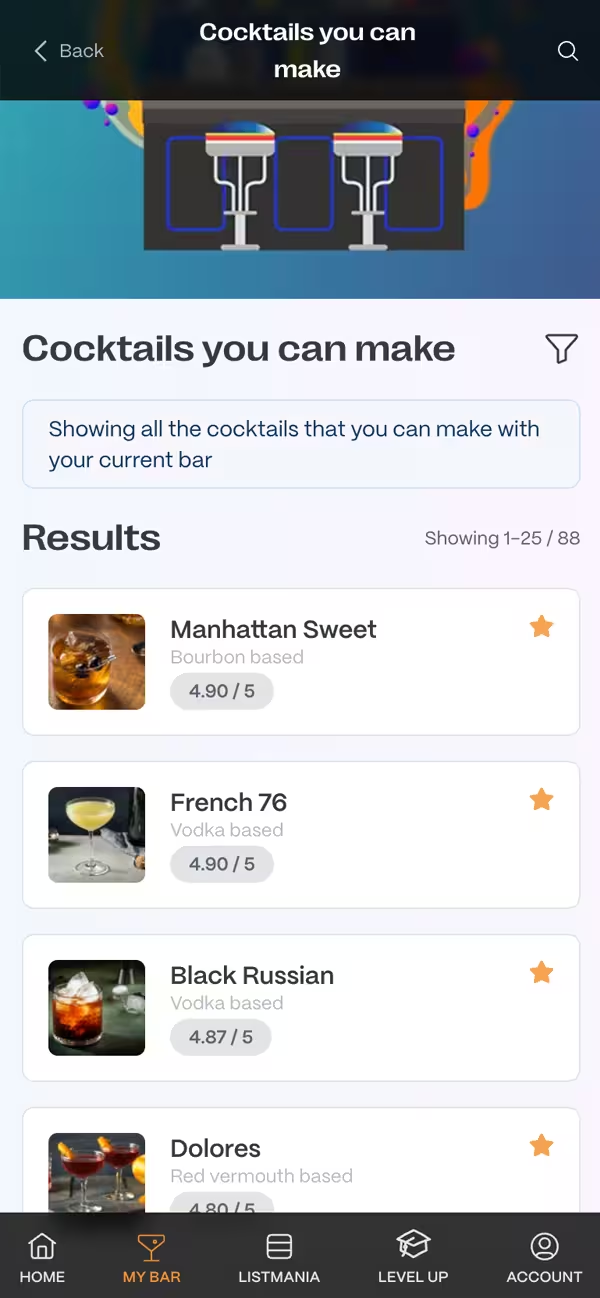Chestnut Liqueur
With Chestnut Liqueur you can make
We've got 1 cocktails that can be made with Chestnut Liqueur.
Find out what to make with Chestnut Liqueur
Q&A
What is the origin of chestnut liqueur?
Chestnut liqueur has roots in the culinary traditions of Europe and Asia, where chestnuts have been a staple food for centuries. The practice of infusing chestnuts with alcohol to make liqueurs likely originated in regions where chestnuts were abundant, particularly in Italy and France. These countries have a long history of producing a variety of nut-based liqueurs, and chestnut liqueur is a part of this rich tradition. The exact origin date is hard to pin down, but it has been enjoyed by locals for generations, often made in homes and small artisanal distilleries before becoming more widely available.
What is chestnut liqueur made from?
Chestnut liqueur is made from chestnuts, sugar, and a base liquor such as brandy or vodka. The process involves roasting chestnuts and then macerating them in the chosen alcohol base to infuse it with their flavor. After an adequate infusion period, the mixture is strained to remove the solids, and sugar is added to sweeten the concoction. The result is a smooth, sweet liqueur with a rich, nutty flavor profile that includes notes of caramel and vanilla, thanks to the roasting process.
How is chestnut liqueur typically served?
Chestnut liqueur can be enjoyed in several ways. It is delightful when served neat or on the rocks as a digestif, offering a warm, nutty finish to a meal. Additionally, it shines as a versatile cocktail ingredient, adding depth and complexity to both classic and contemporary cocktails. For colder months, it pairs exceptionally well with warm beverages, adding a sweet, nutty twist to hot chocolate or coffee. For a simple yet sophisticated serve, try mixing it with sparkling water and a squeeze of fresh lemon for a refreshing drink.
Can you make chestnut liqueur at home, and if so, how?
Yes, chestnut liqueur can be made at home with some patience and the right ingredients. Start by roasting fresh chestnuts, then peel them once they're cool enough to handle. Place the peeled chestnuts in a jar and cover them with your choice of base liquor, such as vodka or brandy, ensuring the nuts are fully submerged. Let the mixture infuse for about 4 to 6 weeks in a cool, dark place, shaking the jar gently every few days. After the infusion period, strain the liquid, add sugar syrup to your taste, and let it sit for another week or two to marry the flavors. The result is a homemade chestnut liqueur to enjoy in your favorite cocktails or as a neat digestive.
Is there a non-alcoholic substitute for chestnut liqueur in cocktails?
For those looking for a non-alcoholic substitute for chestnut liqueur in cocktails, consider making a chestnut syrup. Simmer roasted and chopped chestnuts with water and sugar until the flavors are well blended and the sugar is dissolved. Strain the mixture to remove the nuts, and you'll have a sweet, nutty syrup that can mimic the flavor profile of chestnut liqueur. While it won't replicate the alcoholic warmth, chestnut syrup can provide a similar taste in non-alcoholic cocktails and mixed drinks, making it a great option for sober celebrations or as an inclusive alternative.
Ingredients like Chestnut Liqueur
Other Nut Liqueurs
How it works
Easily create your bar from the ingredients you have at home, and we'll show you what you can make with the ingredients you have to hand.
Once you've added this ingredient head to your My bar page and fill up everything else you have.
We'll also show you cocktails that can make by substituting what you have for one of the ingredients you don't, riffing on the original. Now go forth and create something delicious!







